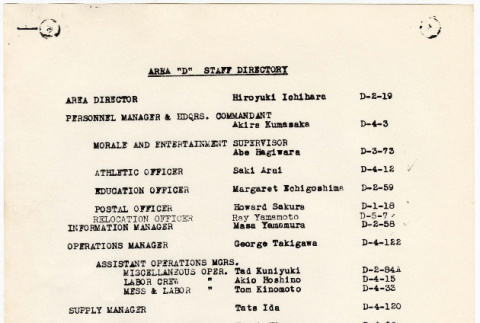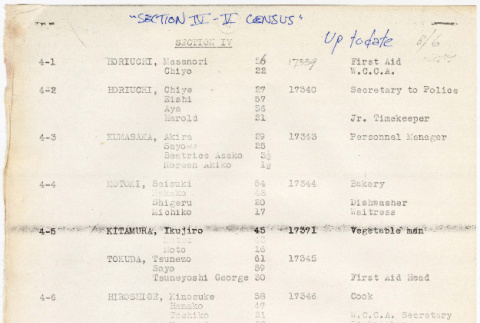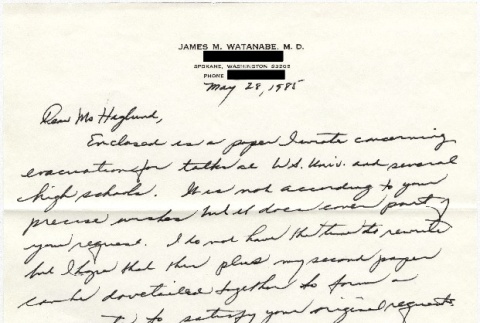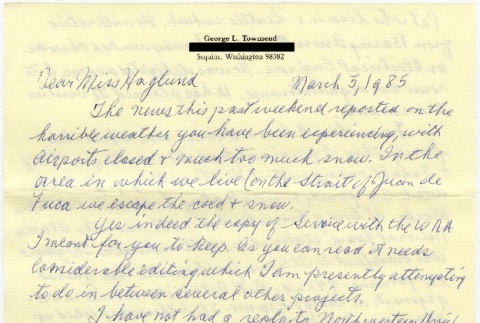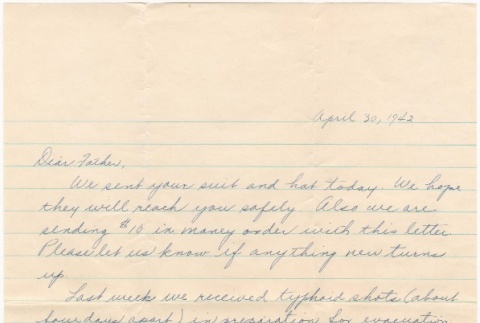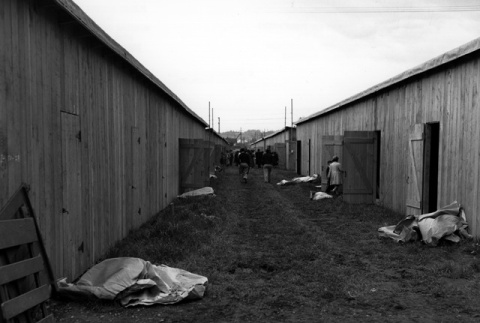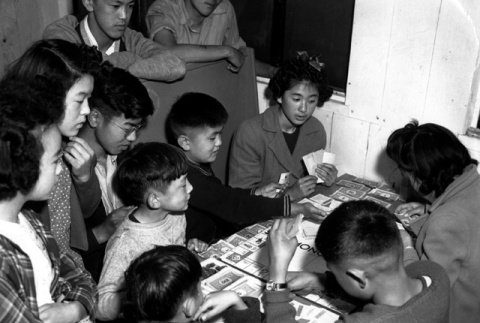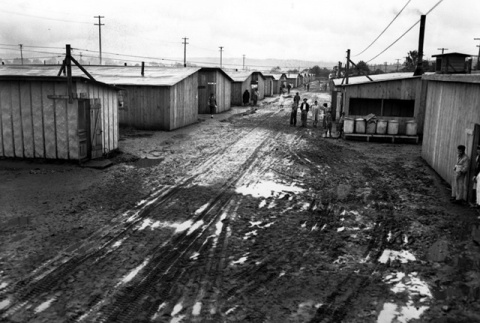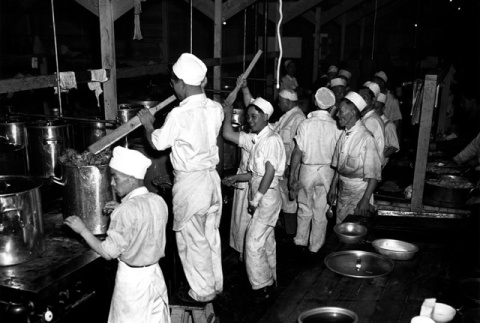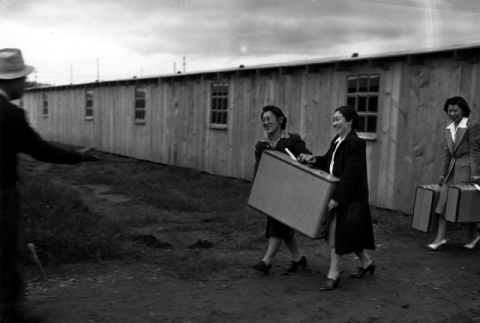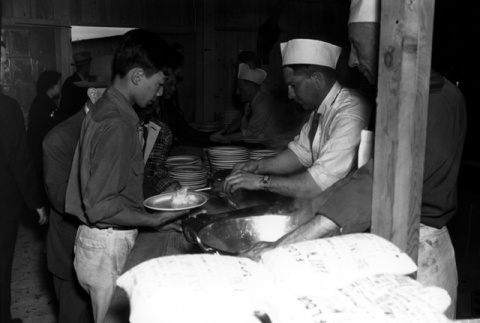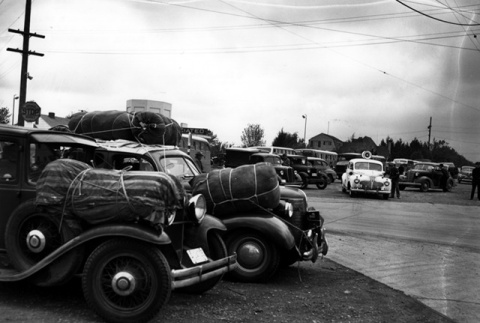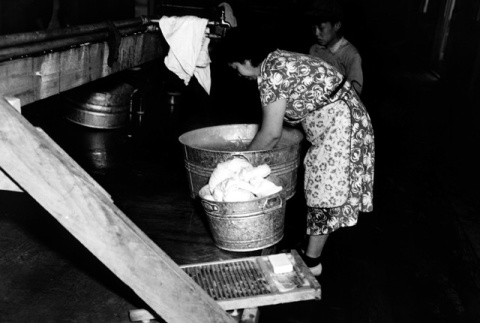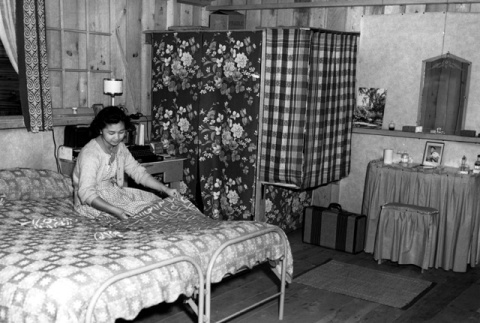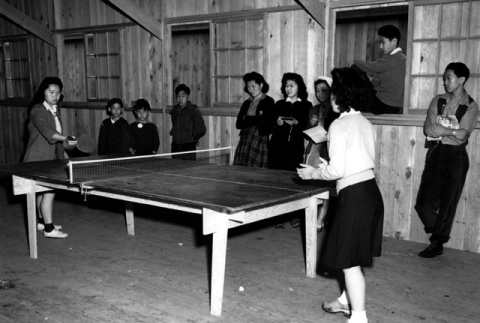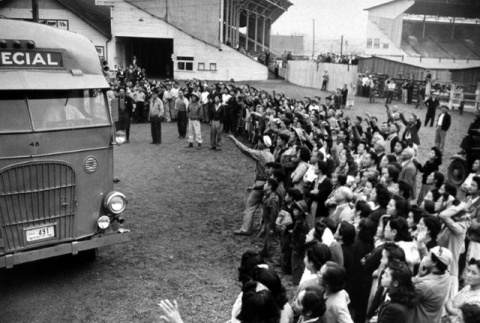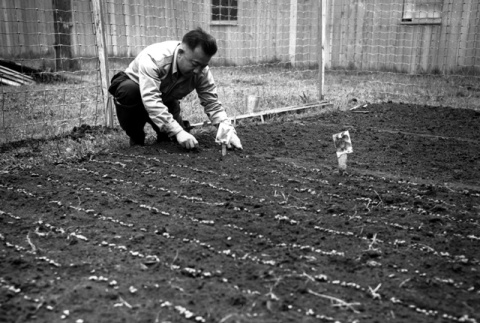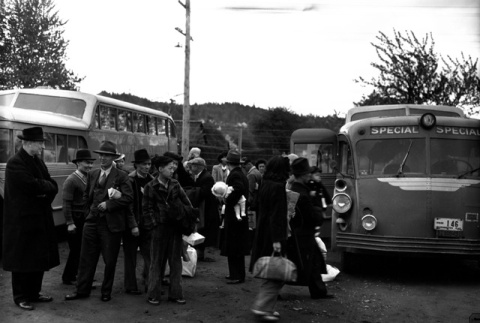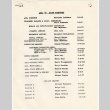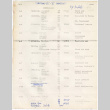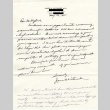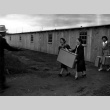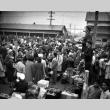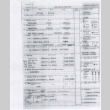292 items
292 items
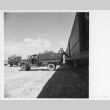
img
Unloading luggage (ddr-fom-1-887)
WRA caption on reverse: "The baggage of approximately six hundred evacuees from the assembly center at Puyallup, Washington, is taken from the train by truck to their new homes at the Minidoka War Relocation Authority Center."
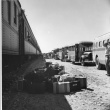
img
Incarcerees transferring from trains to buses on their way to Minidoka (ddr-fom-1-889)
WRA caption on reverse: "This evacuee has just arrived by train with 600 others from the Puyallup assembly center and is boarding one of the waiting buses for the Minidoka War Relocation Authority center."
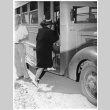
img
A woman boarding a bus to go to Minidoka (ddr-fom-1-888)
WRA caption on reverse: "This evacuee has just arrived by train with 600 others from the Puyallup assembly center and is boarding one of the waiting buses for the Minidoka War Relocation Authority center."
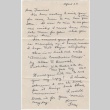
doc
Letter to Frances Haglund (ddr-densho-275-15)
Letter to Frances Haglund from Lury Sato answering some of Frances's questions. Also notes possibly written by Frances

doc
Letter to Frances Haglund from George L. Townsend (ddr-densho-275-42)
A letter from George Townsend regarding Frances Haglund's article "Behind Barbed Wire."
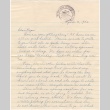
doc
Letter to Kinuta Uno at Fort Missoula (ddr-densho-324-6)
Correspondence from Kinuta Uno's daughter discussing daily life, mass removal to Puyallup "Camp Harmony" Assembly Center asking about life at Fort Missoula, and requesting more letters from him.
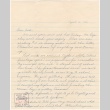
doc
Letter to Kinuta Uno at Fort Missoula (ddr-densho-324-8)
Correspondence from Kinuta Uno's daughter discussing plans for their removal and how they had to quit school after being banned from going into the city limits.
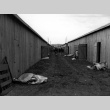
img
Japanese Americans walking between barracks (ddr-densho-36-40)
The Puyallup Assembly Center, also known as "Camp Harmony," was on the racetrack of the Puyallup fairgrounds. The center was open from April 28, 1942, through September 23, 1942. Most camp inmates were from Seattle, Washington. This is a view of the barracks that housed them.
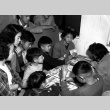
img
Group playing Monopoly (ddr-densho-36-38)
Japanese Americans did their best to lead normal lives in the Puyallup Assembly Center. They cultivated gardens, engaged in different types of activities, and played games such as Monopoly.
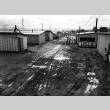
img
Puyallup Assembly Center (ddr-densho-36-43)
The Puyallup Assembly Center, also known as "Camp Harmony," was on the racetrack of the Puyallup fairgrounds. The center was open from April 28, 1942, through September 23, 1942. Most camp inmates came from Seattle, Washington. This is a view of the barracks that housed them.
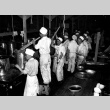
img
Japanese Americans cooking (ddr-densho-36-34)
The assembly center was composed of blocks, each with its own kitchen and dining area.
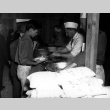
img
Japanese American receiving lunch (ddr-densho-36-42)
The assembly center was composed of blocks, each with its own kitchen and dining area.
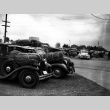
img
Baggage arrival at assembly center (ddr-densho-36-41)
The Puyallup Assembly Center, also known as "Camp Harmony," was located at the Puyallup fairgrounds. The center was open from April 28, 1942, through September 23, 1942. Most camp inmates were from Seattle, Washington.
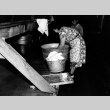
img
Japanese American washing clothes (ddr-densho-36-36)
The Puyallup Assembly Center was composed of a number of blocks. Each block had a communal washroom, such as the one shown here.

img
Barracks interior (ddr-densho-36-39)
Barracks apartments were small--approximately 8 by 10 feet or 15 by 20 feet--and offered little privacy. Japanese Americans tried hard to make the stark apartments homier. They made furniture, such as the vanity table in this redecorated barracks apartment, which was constructed by hand from scrap lumber.
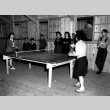
img
Group playing Ping-Pong (ddr-densho-36-37)
Japanese Americans made every effort to lead normal lives in the Puyallup Assembly Center. They cultivated gardens, engaged in different types of activities, and played games such as ping-pong.
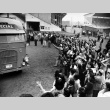
img
Japanese Americans waving good-bye (ddr-densho-36-63)
The Puyallup Assembly Center housed primarily Japanese Americans from Seattle, Washington. It was open from April 28 to September 23, 1942. Most of the Japanese Americans from the Puyallup Assembly Center were later sent to the Minidoka concentration camp in Idaho.

img
Japanese American gardening (ddr-densho-36-35)
Japanese Americans tried hard to make life at the assembly center bearable. Here, a camp inmate tends to a garden.
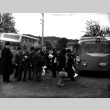
img
Arrival at the Puyallup Assembly Center (ddr-densho-36-32)
The Puyallup Assembly Center, which many camp inmates called "Camp Harmony," was on the site of the annual Western Washington Fair. The center was constructed in only seventeen days. Barracks were erected in converted livestock stalls near the parking lots and under the grandstand. Japanese Americans remained at the fairgrounds from April 28 to September 23,1942, …
